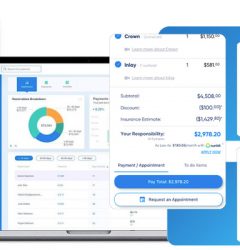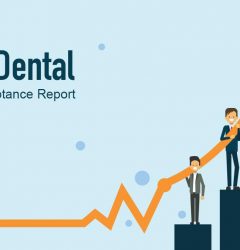Treatment Planning
3 Common Frustrations That Dental Patients Have When It Comes To Their Treatment Plans
23 Jul

We live in busy times. For our patients time is a scarce commodity and when they choose to invest it, they want to do it wisely.
People have very specific goals when visiting a doctor. In dentistry, some of their priorities could include improving dental appearance, reducing pain, extend teeth longevity, and many more. To that end, when seeing their dentist, they have three questions:
- What do I need?
- Why do I need it?
- How do I get it?
A Treatment Plan Presentation fails when we fail to answer one of those questions satisfactorily.
What do I need?
In our information-laden society, where quick answers, albeit not necessarily correct ones, are at our fingertips, it is imperative to perform a thorough evaluation. “Trust” in an accurate diagnosis is the most important aspect in this step. The patient has to feel that the doctor has gathered all information, and has taken all the time necessary to determine the best treatment option. The Treatment Plan has to address the patient’s goals and priorities while at the same time including their dental needs.
Many times, as dental professionals, we prioritize dental needs and forget what specifically, brought the patient in. While it is true that healthy gums and teeth are more important, we have to address that incisal edge manicuring or that unsightly decalcification spot. If we do not clearly identify and address the patient’s main concern, they’ll feel ignored and disrespected, and will not follow us to the next step.
Why do I need it?
Clear, logical “Effective Communication” is the main factor in this step.
It is not enough that “we” know that a thorough root planning or an inevitable root canal is a priority in our patient’s Treatment Plan. We need to be able to convey that information and sense of urgency in a clear, concise and simple way. The vocabulary should be tailored to the audience. Avoid technical and clinical terminology which will confuse most people that are not Dental or Healthcare professionals. Also remember that our patient may have already surfed the World Wide Web researching about their dental goals. The old adage holds true here, “less is more” make sure to answer all questions and address all concerns but avoid information that is not pertinent to the matter at hand.
How do I get it?
If you have gotten to this point successfully, Congratulations! you have already established the value proposition.
Your patients know and trust that all their goals and concerns will be addressed satisfactorily. Moreover, they are well educated in regards to dental needs they had not realized they had.
They have a clear timeline, and they understand the way that their Treatment Plan is staged by prioritizing restoring healthy tissues and dental structures before moving on to cosmetic procedures.
The most important factor in this step is “creativity”. It falls on the Treatment Coordinator to help patients in obtaining the dental care that they need, want and deserve.
Each patient has different challenges. May it be fear of the dental chair, a busy schedule, a physical, financial or any other limitation, the fun part of being a Treatment Coordinator is to help patients sort them out.
Be creative and think outside the box. Find solutions, collaborate with dental and medical colleagues, and work up special arrangements that benefit both, the patient and the practice.
Remember, your patients already took the time to come to your practice to address their concerns; they understand the value and want the care they deserve. The only thing left now is to work together to make it happen!

With over 30 years of experience in the Dental field, working in all practice roles in every dental specialty, Lourdes has an unparalleled commitment and dedication to the betterment of the Dental profession, holding a very place in her heart for the specialty of Orthodontics and its potential to improve people’s lives.
Recent Posts
Join Thousands Of Happy Providers
Start maximizing your revenue today!
26%
Average increase in practice ‘s productivity
- Increase case acceptance
- 350+ payer integrations
- Collect more, faster
- Reduce A/R costs
- Full automation
- Live customer support
Ready to get started?
Your online account setup only takes minutes. If you have questions, contact us at (213) 645-2813

Support Hours:
6 AM to 5PM (PST)









